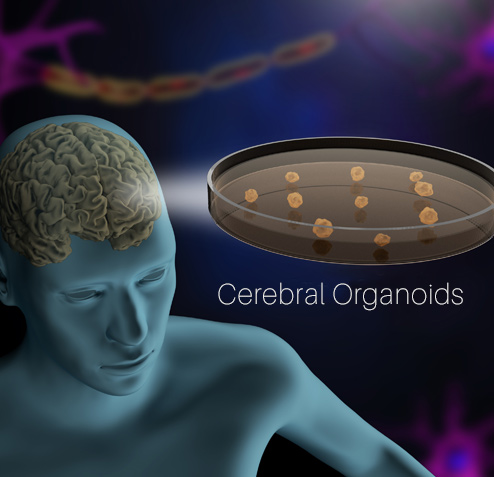The Future of in vitro Modeling is Organoids
Organoids, or mini-organs, may be grown from various cell types, including embryonic stem cells, induced pluripotent stem cells, or even adult stem cells. Unlike the classical monolayer cell cultures, organoids are developed to replicate the 3D cellular composition and organization of specific organs. Therefore, organoids can serve as excellent model systems to elucidate organ development processes, unravel disease mechanisms, and ultimately support regenerative medicine strategies.
Recognizing the critical need for models that better recapitulate the biology, physiology, and pathology of human tissues, the Human Cell Atlas Organoid project aims at developing an initial working version of brain and colon organoid cell atlases within two years. Perhaps an ambitious deadline, considering the enormity of the task. Yet, without a doubt, this initiative as part of the Human Cell Atlas project should impact biological research and medicine in ways akin to the Human Genome Project in the long run.
The Human Cell Atlas Organoid project was announced at the very end of 2020 (Bock et al. 2021). This collaborative project will bring together scientists from at least eight basic and biomedical research institutes across Europe. Collaborating institutions providing their expertise in organoid development include Hubrecht Organoid Technology, Princess Máxima Center for Pediatric Oncology, and the Institute of Molecular Biotechnology of the Austrian Academy of Science (IMBA). Additionally, the Center for Molecular Medicine of the Austrian Academy of Sciences (CeMM) and Friedrich Miescher Institute for Biomedical Research (FMI) will collaborate by providing their expertise in single-cell analysis, including sequencing and imaging.
Mapping Human Organoids
This collaborative effort aims to develop standard and optimal protocols for the generation of brain and colon organoids to support disease modeling and precision medicine, drug discovery, and regenerative medicine applications (Bock et al. 2021). To achieve these goals, several approaches, including single cell-transcriptomics, -epigenomics, and -imaging analyses, will enable the comparison of brain and colon organoids to their respective primary human tissues.
By generating cellular and molecular organoid maps, this initiative is expected to significantly improve and standardize organoid models’ development and experimental use. Prompt availability of initial maps of brain and colon organoids within two years means that a wealth of information will be available to the global scientific community, which will undoubtedly foster further collaborations.
Why is the initial focus on brain and colon organoids? About this, Bock et al. explained that pioneering work and substantial progress in the development and use of brain and colon organoids accomplished so far makes them ideal systems for further single-cell level mapping.

Brain organoids may be developed from pluripotent stem cells (PSCs) in the presence or absence of extrinsic factors, resulting in organoids with distinct brain regional identity or containing several brain region identities, respectively. Cerebral organoids are developed from PSCs in the absence of extrinsic factors (Kim et al. 2021).
A Closer Look at Brain Organoids
Juergen Knoblich’s group first described effective culture conditions to develop cerebral organoids containing identifiable regional diversity and organization (Lancaster et al. 2013). In this pioneering work, Lancaster and colleagues produced neuroectoderm from embryoid bodies, which were later grown under conditions promoting 3D tissue expansion. This approach enabled them to generate cerebral organoids having distinguishable brain regions, including the forebrain, midbrain, and hindbrain. These defined brain regions were confirmed through morphological, RT-PCR, and immunostaining analysis. Additionally, extensive molecular characterization confirmed regions of sub specification as cerebral organoid development progressed.
Not surprisingly, Dr. Juergen Knoblich will play a critical role in the Human Cell Atlas Organoid project. As a Team Leader for the IMBA, his laboratory will lead the development of brain organoids and support their characterization and application to disease modeling.
Reference
Bock, C. et al. The Organoid Cell Atlas. Nature Biotechnology (2021) doi:10.1038/s41587-020-00762-x.
Kim, J., Sullivan, G. J. & Park, I.-H. How well do brain organoids capture your brain? iScience (2021) doi:10.1016/j.isci.2021.102063.
Lancaster, M. A. et al. Cerebral organoids model human brain development and microcephaly. Nature (2013) doi:10.1038/nature12517.
- Like (2)
- Reply
-
Share
About Us · User Accounts and Benefits · Privacy Policy · Management Center · FAQs
© 2026 MolecularCloud



